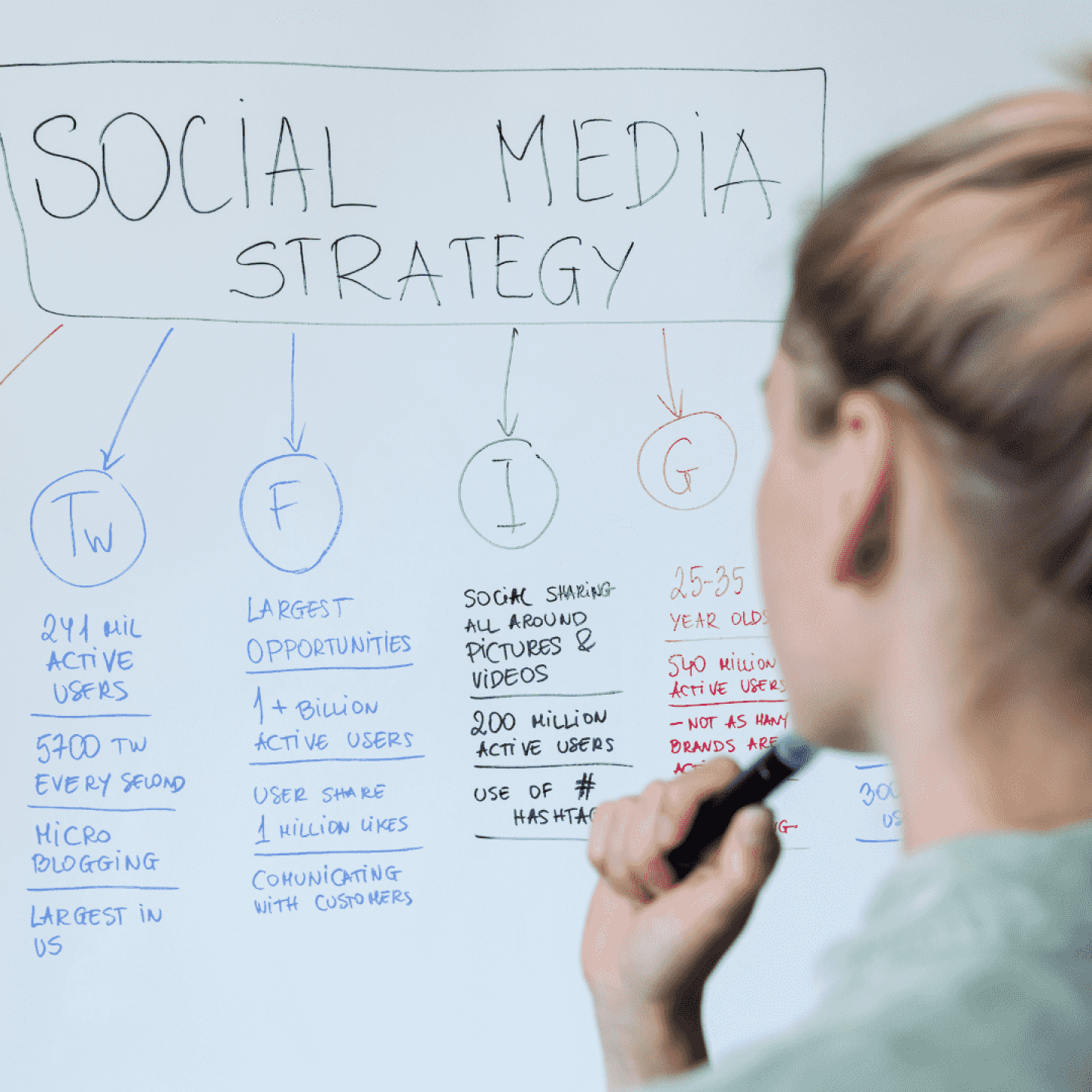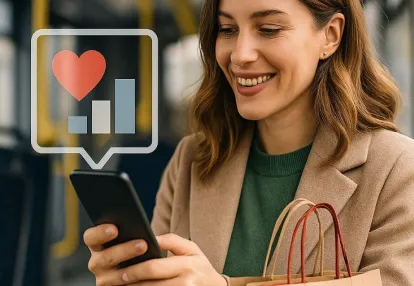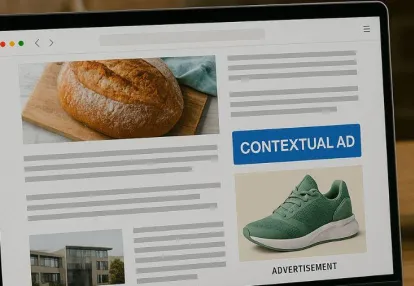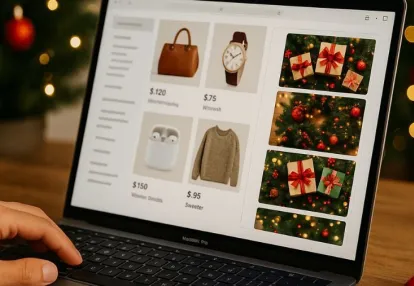
Our spy tools monitor millions of native ads from over 60+ countries and thousands of publishers.
Get StartedIn the world of digital marketing, there are two strategies that stand out for their ability to cut through the noise of traditional advertising: native advertising and influencer marketing.
Both native advertising and influencer marketing have proven to be effective strategies on their own. But what happens when we combine them? Can integrating native ads with influencer campaigns create a powerful synergy that takes brand messaging to new heights?
In this article, we'll explore:
Native advertising is a form of paid media where the ad experience follows the natural form and function of the user experience in which it is placed. Unlike traditional ads that are often disruptive, native advertising blends with its surrounding content, making it less intrusive and more engaging for consumers.
On platforms like Instagram, native ads appear as sponsored posts within the feed, stories, or explore tab looking almost identical to organic content. For instance, a beauty brand might partner with Instagram to create a sponsored post featuring their newest line of lipsticks. The ad would seamlessly integrate with other posts in a user's feed, maintaining the platform's aesthetic and user experience.
Illustrative Case:
Blogs play a pivotal role in native advertising strategies by offering in-depth storytelling opportunities. Brands can sponsor articles that provide value to readers while subtly integrating their products or services within the content. This approach not only educates readers but also drives them towards making informed purchase decisions.
Blog Integration Example:
The success of native advertising campaigns is often measured by conversions—actions taken by consumers as a result of the ad, such as signing up for a newsletter, downloading an app, or making a purchase. Tracking conversions helps marketers understand the effectiveness of their native ads and optimize future campaigns for better results.
Conversion Metrics Might Include:
For those interested in building competitive native advertising campaigns, tools like Anstrex Native provide invaluable insights into profitable ads across various industries.
In contrast to native advertising's focus on blending in with content, influencer marketing leverages individuals with influence over potential buyers and orients marketing activities around these individuals to drive brand messages to the larger market. The key is authenticity and trust which influencers have established with their audience.
Influencer marketing is particularly effective for reaching TikTok-ads" target="_blank" rel="noreferrer noopener">younger demographics like Gen Z who value authentic relationships with content creators. By partnering with influencers whose followers align with their target audience, brands can amplify their message effectively and organically.
Micro-influencers may have smaller followings compared to celebrity influencers but they boast highly engaged niche communities. These influencers can generate significant conversions due to the trust they've built within their specific audience segments.
Micro-Influencer Example:
By understanding these differences between native advertising and influencer marketing, brands can leverage each method's unique strengths to create more impactful marketing strategies that resonate with audiences across different platforms.
Influencer marketing is the use of popular social media personalities to promote brands, products, or services. Unlike native advertising which blends with the platform's content, influencer marketing relies on individuals’ influence over their followers.
At its core, influencer marketing involves partnering with social media personalities to enhance your brand’s visibility and credibility. These individuals have established a high level of trust with their audience, making their endorsements valuable.
Influencers excel at creating content that resonates with their audience. When aiming to enhance brand awareness, particularly among Gen Z, influencers can be instrumental due to their authentic connection with this demographic. They often use platforms such as TikTok or Instagram, which are hugely popular among younger audiences.
While celebrity endorsements can reach millions, micro-influencers bring a unique strength — influence within niche communities. Their smaller but highly engaged following can drive meaningful interactions and often higher conversion rates for brands targeting specific groups.
Analyzing the differences between native advertising and influencer marketing reveals distinct advantages:
When considering influencer marketing for your strategy, it is crucial to identify influencers who embody your brand’s values and connect genuinely with your target audience. The relationship between brand and influencer should be transparent to maintain consumer trust — a factor that cannot be overstated in its importance to successful campaigns.
The combination of native advertising and influencer marketing relies on two important factors: audience engagement and consumer trust. These are crucial elements of a successful marketing strategy that resonates with today's consumers who are often skeptical of traditional advertising methods.
Native ads and influencer marketing have something in common – they both excel at capturing audience attention. Unlike disruptive ad formats, native ads blend seamlessly with the content that surrounds them, which can lead to higher engagement rates. When you integrate native ads into an influencer's content, this effect is magnified. Influencers have a pre-existing rapport with their followers, and when they feature native ads that align with their usual content, the ads are perceived as less intrusive and more engaging.
In today's digital marketplace, consumer trust is invaluable. Influencers earn the trust of their followers through consistent, genuine content that speaks to the interests of their community.
By combining the subtle integration of native advertising with the personal endorsement of an influencer, brands can create powerful synergies:
Integrating native ads and influencer marketing not only enhances audience engagement but also fortifies consumer trust. As these two strategies converge, they create compelling content experiences that resonate deeply with audiences – resulting in a more effective marketing approach tailored for today’s discerning consumers.
Crafting impactful content across various platforms demands an understanding of each medium's unique attributes and user expectations. Successful marketers recognize that what works on Instagram might not have the same effect on blog readers or YouTube viewers.
Recognizing these nuances allows for strategic content creation that engages audiences no matter where they encounter your brand’s message.
Compelling content creation is the lifeblood of both native advertising and influencer marketing campaigns. It's not just about promoting a product or service; it's about crafting stories and experiences that resonate with your audience. Here's how integrating native ads and influencer marketing can lead to a cohesive strategy that enhances reach, engagement, and audience trust.
Each platform has unique traits that can be leveraged to maximize the impact of your content:
By strategically using these platforms' strengths within an integrated native advertising and influencer marketing strategy, you're able to capture attention, nurture trust, and drive meaningful engagement with your target audience.
When looking at the combination of native advertising and influencer marketing, it's important to see how these strategies have been used successfully in actual campaigns to evoke emotions and drive sales. Here are some case studies that showcase this effective combination:
Spotify created personalized year-end playlists for users, then collaborated with influencers to share their own #2018Wrapped playlists natively within their social media content. This approach felt authentic and resonated emotionally with followers, leading to an increase in user engagement and brand loyalty.
Dunkin’ used influencer marketing by partnering with micro-influencers who created posts that matched the aesthetic of their personal Instagram feeds while subtly highlighting Dunkin' products. These posts didn't disrupt the user experience, instead adding value through relatable content which drove sales up as part of a larger native advertising campaign.
Airbnb has often partnered with celebrities like Kim Kardashian and Mariah Carey to stay in luxurious properties, who then share their experiences on social media. These posts aren’t overt advertisements but blend seamlessly with the rest of the content on their timelines, providing an aspirational image that encourages followers to book similar experiences.
These examples demonstrate how native advertising and influencer marketing can be integrated seamlessly into a campaign that feels more like storytelling than advertising. By creating content rich with narrative and personal connection, brands cultivate deeper relationships with consumers which often leads to an increase in sales.
The success lies in crafting messages that are not only genuine but also resonate on a personal level with audiences.
The effectiveness of combining these two marketing approaches is evident from these campaigns. They show how leveraging the strengths of both native ads and influencer endorsements creates a more powerful impact than either could alone. With each example, note how brands facilitate organic sharing of content – a testament to the potential reach and influence such combined efforts can wield in today's digital marketplace.
When it comes to native ads and influencers working together, it's clear that they make a great team. Native advertising is all about blending in with the surrounding content, providing a seamless experience for users. This is especially important now when traditional ads are often ignored or blocked.
Influencer marketing takes this a step further by adding a personal touch. Influencers are trusted individuals who have built relationships with their followers through genuine interactions. When these influencers incorporate native ads into their content, they're not just promoting a product; they're integrating it into their own story in a way that resonates with their audience.
Here are some key reasons why these two strategies are a powerful combination:
The combination of native advertising and influencer marketing opens up exciting possibilities for brands to connect with consumers in a meaningful way. By leveraging the trust that influencers have established with their audience and combining it with the subtlety of native advertising, companies can create marketing campaigns that deeply resonate with consumers on a personal level.
Keep in mind that the success of these collaborations depends on selecting the right influencers and creating native ads that not only sell but also enhance the content they are a part of.
Native advertising and influencer marketing are a powerful combination in the ever-changing world of digital marketing. These two strategies work together seamlessly, using storytelling and trusted individuals to connect with audiences on a deeper level.
In a market where ad-blocking technologies are prevalent and consumer attention is scattered, brands should consider an integrated approach. This allows you to tap into a synergy that can take your marketing efforts to new heights. Embrace the fusion of native advertising and influencer marketing to craft impactful stories that drive not only views but also action.
Receive top converting landing pages in your inbox every week from us.
How-To
Native ads can do more than drive clicks—they can build long-term brand loyalty. Learn how to use authentic storytelling, strategic placement, and audience targeting to strengthen trust during year-end campaigns. Discover how subtle, value-driven messaging keeps customers engaged beyond the holidays. Ideal for marketers aiming to turn seasonal buyers into loyal brand advocates.
Marcus Chen
7 minDec 15, 2025
Must Read
As third-party cookies fade away, contextual targeting is making a powerful comeback. Learn how to leverage native ads that align with user intent and content relevance to maintain high engagement and conversions. Discover modern tools and tactics that make cookie-free targeting both precise and scalable. Ideal for advertisers seeking privacy-friendly ways to drive performance in 2025 and beyond.
Liam O’Connor
7 minDec 9, 2025
Recently Updated
Native ads can make or break your holiday marketing success. Explore how to evaluate your recent campaigns and identify what worked—or what fell short—with native advertising. Learn key optimization tactics to boost engagement, strengthen audience trust, and increase conversions in future promotions. Ideal for marketers aiming to refine their ad strategies after the holiday rush.
Elena Morales
7 minDec 1, 2025




